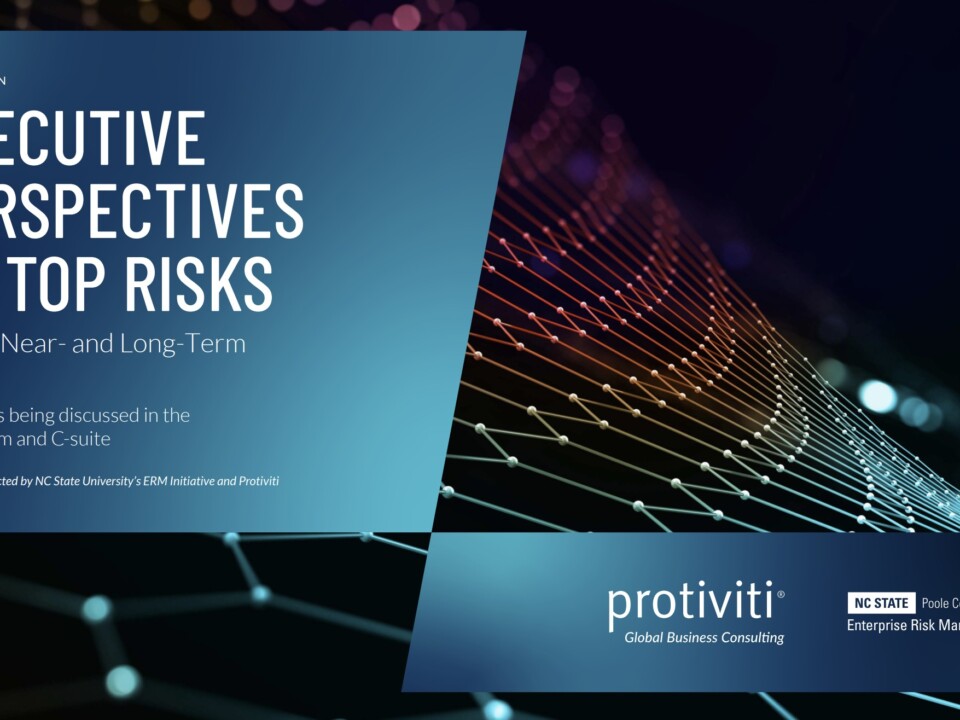
Professional Resilience Means Never Being Defined by Our Failures
August 2, 2023
Sky-high CEO Pay Can Create Significant Risks
August 14, 2023I am often asked for the most common advice I offer to internal auditors seeking to deliver greater value for their organizations. I offer 3 simple words in response: “follow the risks!”
Before we can follow the risks, however, we must be risk aware. In the era of permacrisis, maintaining risk awareness is becoming ever more critical. For that reason, I am always on the lookout for predictions or forecasts of emerging risks or those that lie ahead. So, when the World Economic Forum (WEF) issued it recent Chief Risk Officers’ Outlook, it immediately caught my attention. The WEF report is based on surveys and interviews with chief risk officers (CROs) from leading public and private sector organizations from around the world. The CROs were asked to gauge the likely level of global volatility across five broad areas (geopolitical relations, economy, domestic politics, society, and technology). Additionally, they were asked to pinpoint up to five risks that are likely to profoundly impact their respective organizations throughout the remainder of 2023.
The survey results point to a range of global risks with the potential to threaten economic growth, destabilize global markets and disrupt broader business operations over the last half of 2023. Over 85% of the CROs expect some level of continued volatility in economic and financial conditions within and across major economies.
While the risk to your organization will obviously be subject to many more variables (regional, national, sector, industry, etc.). I still think it is worth taking a look. The following are highly likely to have a severe impact on their organizations in the next six months:
- Macroeconomic indicators: The emphasis of chief risk officers on economic risks aligns with the pessimistic global evaluations of the outlook for worldwide growth. While inflation rates have started to fade, inflation continues to influence the landscape of economic risks. This is particularly evident in the context of rising interest rates, which have constrained demand and elevated borrowing expenses.
- Pricing and/or supply disruptions of key inputs: Even though the strain on global supply chains has lessened compared to the levels seen in the past two years, many companies are still contending with debilitating ambiguity surrounding the availability and pricing of inputs, especially certain raw materials. As several CROs indicated, the prospect of additional environmental or geopolitical disruptions affecting essential inputs remains a significant consideration over the remainder of the year. This could include scenarios like the resurgence of El Niño conditions or stricter regulations on crucial industrial components.
- Armed conflicts and/or use of weapons: The apprehensions expressed by CROs regarding conflict-related risks is almost certainly influenced by the ongoing war in Ukraine, alongside potential disruptions to trade flows and supply networks. Nevertheless, a substantial number of businesses across the globe are directly affected by armed conflicts, with approximately 110 such instances of conflict taking place worldwide.
- Regulatory changes, compliance and enforcement: The regulatory risks underscored by CROs encompass trade limitations and the evolving regulations concerning climate change and technology. Survey participants also pointed out the escalating significance of ethical and societal risks for organizations, which they regarded as more intricate to navigate compared to regulatory adherence.
While the foregoing risks dominated the outlook, CROs did weigh in on a litany of other potential risks. Listed below in ranked order are other risks CROs believe could have a severe impact on their organizations during the remainder of the year (with the percentage who ranked the risk among the top 5):
- Elections and political regime change (36%)
- Misinformation and disinformation (false, manipulated, or fabricated content etc.) (27%)
- Intrastate violence (civil strikes, riots, coups etc.) (23%)
- Debt (corporate, sovereign, household etc.) (23%)
- Activism (boycotts, divestment, litigation relating to social values, politics, climate, nature, AI etc.) (18%
- Failure of critical infrastructure (financial systems, transport, energy, communications etc.) (18%)
- Criminal activity (money laundering, cybercrime etc.) (14%)
- Digital power concentration and inequality (14%)
- Unemployment and job displacement (climate transition, generative AI, economic downturn etc.) (5%)
- Scarcity of skilled resources (5%)
- Inability by the international community to find solutions for protracted conflicts (5%)
In my seminars, I am constantly stressing the need for internal auditors to identify emerging risks and to collaborate with risk professionals in their organizations to continuously monitor risks. Resources like the recent WEF report can provide a excellent source of insight into risks that should be on our radar.
The WEF report also takes a deep dive into AI Technology risks that organizations are beginning to face. I have written on this before and will come back and revisit this topic in an upcoming blog.
What are your thoughts on the new WEF Chief Risk Officers’ Outlook Report? Share your experiences with me on LinkedIn or Twitter, or drop me an email at blogs@richardchambers.com.




I welcome your comments via LinkedIn or Twitter (@rfchambers).